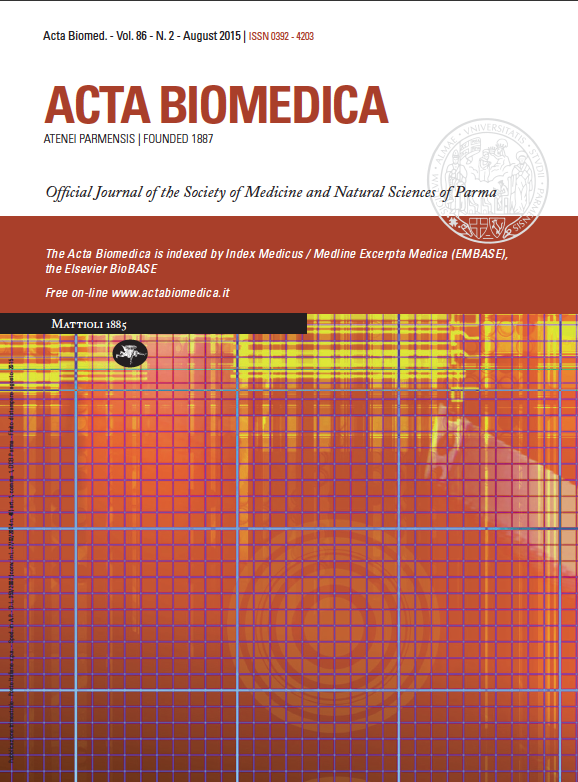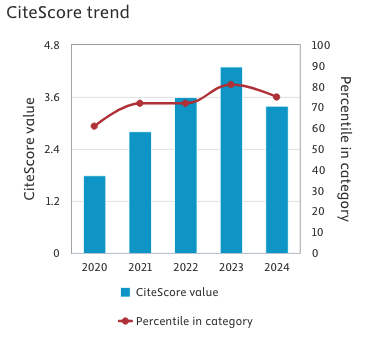Quality of life and functional disability in patients with interstitial lung disease related to Systemic Sclerosis
Keywords:
scleroderma, health related quality of life, interstitial lung disease, dyspneaAbstract
Background: Systemic Sclerosis (SSc) is a connective disease impairing respiratory function. SSc worsens patients’ Health Assessment Questionnaire (HAQ-DI), Short Form 36 Physical and Mental Component Summary (SF36-PCS and SF36-MCS). The aim of this work is to verify whether there is correlation between quality of life and lung interstitiopathy in SSc patients. Methods: SF36 and HAQ-DI were given to each patient (48 in all). Lung involvement was evaluated with Baseline Dyspnea Index (BDI), spirometry and pulmonary fibrosis radiological assessment (PFRA). Correlations between SF36, HAQ-DI and lung involvement severity were investigated with Spearman’s rank test. A p-value<0.05 was considered statistically significant. Results: SF36-PCS and SF36-MCS correlate with BDI (respectively rho=0.553 p=0.0001; rho=0.357 p=0.0150). The best correlating SF36 subsets are Physical Role (rho =0.566 p<0.0001) and Bodily Pain (rho=0.444 p=0.0020). BDI correlates with HAQ-DI (rho=-0.655 p<0.0001). No statistically significant correlation was found between SF36, HAQ-DI and spirometrical values nor PFRA. Conclusions: The SSc patients enrolled have an impaired quality of life as widely demonstrated in literature. Quality of life reduction and functional ability decrease are only related to respiratory subjective impairment (assessed by BDI). Actually no correlation with objective lung damage (assessed by spirometry and PFRA) was detected.Downloads
Published
Issue
Section
License
This is an Open Access article distributed under the terms of the Creative Commons Attribution License (https://creativecommons.org/licenses/by-nc/4.0) which permits unrestricted use, distribution, and reproduction in any medium, provided the original work is properly cited.
Transfer of Copyright and Permission to Reproduce Parts of Published Papers.
Authors retain the copyright for their published work. No formal permission will be required to reproduce parts (tables or illustrations) of published papers, provided the source is quoted appropriately and reproduction has no commercial intent. Reproductions with commercial intent will require written permission and payment of royalties.



